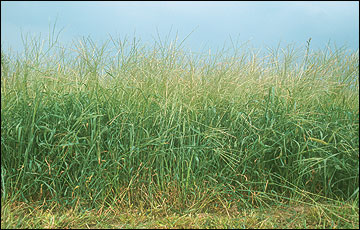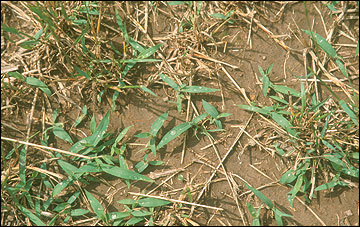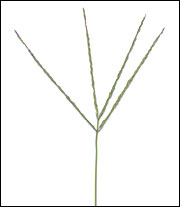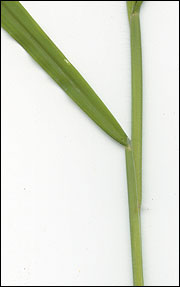Reviewed
Crabgrass (Digitaria spp.)
Warm-season grasses
Crabgrass is a warm-season annual that is easy to establish. Stands of crabgrass can last almost indefinitely if managed to encourage volunteer reseeding. Although often considered a weed, crabgrass is a high-quality forage that can produce 6,000 to 10,000 lb/acre of dry matter annually. The majority of the dry matter is produced from mid-June to August. Crabgrass is adapted statewide and tolerates poorly drained soils well but is not cold hardy. It responds well to split applications of nitrogen at establishment and then again after the first grazing.
 Crabgrass
Crabgrass
 Yield distribution of crabgrass in Missouri.
Yield distribution of crabgrass in Missouri.
 Crabgrass in early spring
Crabgrass in early spring
- Origin: Southern Africa
- Adaptation to Missouri: Statewide
- Growth habit: Sod-forming annual.
- Blade: Leaf bud rolled. Leaves broad, open, flat, pubescent.
- Sheath: Open with overlapping margins, shorter than internodes, pubescent.
- Ligule: Thin truncate membrane, toothed margin, about 1/10 inch long. Shorter on first few blades.
- Auricles: Absent.
- Seed head: Slender spikes, several pairs arising from the tip of the stalk.
- Fertilization: 40 lb N/acre at establishment. Apply 60 lb N/acre after first cutting or grazing. Phosphorus and potassium to soil test.
- Timing of production: 80 percent between mid-June and August.
- When to begin grazing: Before it reaches 10 inches in height.
- When to cut for hay: Boot stage.
- Lowest cutting or grazing height: 3 inches
- Fall management: Remove grazing livestock from pasture two to three weeks before first frost to ensure adequate seed production.

